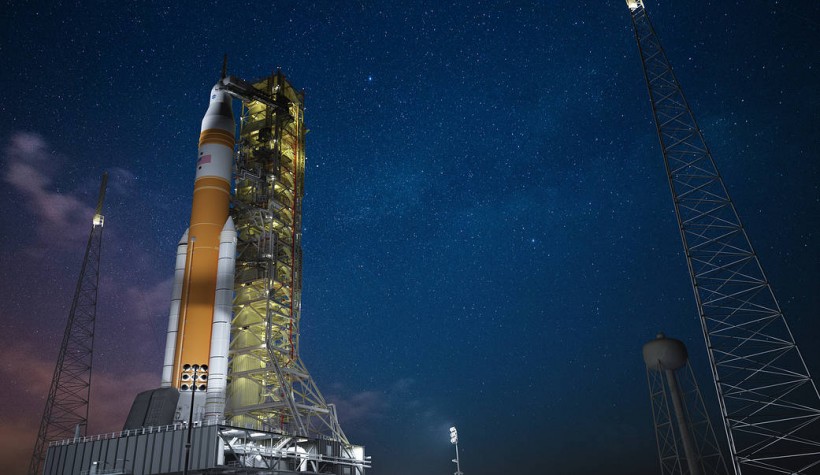The National Aeronautics and Space Administration (NASA) will soon broadcast a booster test for their Space Launch System's 'Most Powerful Rocket Ever Built' on Wednesday, September 2.
NASA looks forward to sharing its beloved rocket that will premiere on NASA Television and its website. The event will also bring in the media members for its teleconference to relay details and answer the questions about the rocket and launch.
Space Launch System (SLS) is optimistic about showcasing its 'most powerful rocket ever built' on Wednesday, September 2, 2:40 PM Eastern Time. The Flight Support Booster-1 will be tested after NASA and Northrop Grumman's latest build and qualification test firings of the five-segment rocket motor built.
Flight boosters are the two extra additions to a rocket ship, and in this case, NASA's Space Launch System rocket will soon support the three Artemis missions set to begin in 2024. The launch-booster tests next week will happen at the Northrop Grumman facilities in Promontory, Utah.
This test would ensure the booster rockets' functions and even determine materials, processes, and improvements that the booster still needs in preparation for its future of in-depth space explorations.
On Wed., Sept. 2, tune in to NASA TV for a full-scale @NASA_SLS rocket booster test from @NorthropGrumman's Promontory, Utah facilities. Engineers will use the data to evaluate materials & processes for rockets powering lunar missions beyond #Artemis III: https://t.co/ocID7QmWZe pic.twitter.com/yGBTvoCfcf — NASA (@NASA) August 27, 2020
ALSO READ: Three Rocket Launches This Week in Florida -How to Watch Live?
Space Launch System and FSB-1
 (Photo : NASA)
(Photo : NASA)
Space Launch System Rocket

Space Launch System Rocket
The Space Launch System is NASA's most ambitious rocket system ever made. NASA boasts SLS as the most powerful ever and claims that it will push earlier rockets' limitations to explore more of the Solar System than ever before.
SLS has the capability of launching four astronauts up in the cosmos together with their Orion spacecraft that will be used to navigate and bring them farther and deeper into space.
FSB-1 will be fitted in SLS rockets to boost and support its flight towards the sky to exit Earth's atmosphere. Booster rockets are essential for the extra push a rocket needs to propel itself up. The heavy SLS rocket will be aided by the pair of Flight Support Booster-1s, who will sustain its launch despite its heavy cargo.
Each of the five segments of the booster rocket weighs 300,000 pounds; combined, it can produce a whopping 3.6 billion lbs of maximum thrust. The FSB-1 pair will provide 75 percent of the SLS' total thrust capacity.
Artemis Lunar Missions
This rocket booster will be a part of NASA's Artemis missions that will conduct lunar missions and soon explore deeper regions in the Solar System. Artemis is Apollo's Twin Sister in Greek Mythology, and NASA describes that this mission mirrors that of the myth. Artemis is humanity's return to the Moon several years after NASA's last moon mission.
NASA's Artemis missions will also bring the first woman to the Moon, along with the next man who will walk the lunar surface. The last mission to bring a man to the Moon is NASA's Apollo 17 that concluded last December of 1972. The mission promises an even more in-depth exploration of the Moon, which will be possible with the new feats in technology and devices.
NASA is looking forward to a "sustainable exploration" with Artemis that will span towards the end of the 2020 decade. Artemis Missions will don a new line of space-designed suits to support astronauts on their quest to explore Earth's biggest natural satellite. Apart from this, Artemis will also see new Lunar Landers and spacecraft, Orion, to aid them on their journey.
This Lunar mission is a step closer to sending more devices and astronauts on heavenly bodies, particularly the Red Planet, Mars.
This article is owned by Tech Times
Written by Isaiah Alonzo









